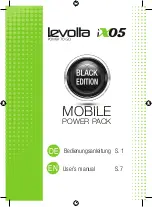
16
| English
Stroke speed selector switch in centre:
Lock-off function activated.
The on/off switch
(6)
is blocked and the power
tool is secured against being switched on unin-
tentionally.
Stroke speed selector switch left:
First gear, low stroke rate
The low stroke rate is suitable for processing
hard materials (e.g. steel, non-ferrous metal,
hard plastics) or for making fine cuts in wood.
The low stroke rate will result in less vibration
when making the cut.
Stroke speed selector switch right:
Second gear, high stroke rate
The high stroke rate is suitable for processing
soft materials and making plunge cuts.
The high stroke rate facilitates faster working,
e.g. for making rough cuts in wood.
Switching on/off
To deactivate the lock-off function, push the stroke speed
selector switch
(5)
to the right or left.
To
switch on
the power tool, press the on/off switch
(6)
and
keep it pressed.
To
switch off
the power tool, release the on/off switch
(6)
.
Note:
For safety reasons, the on/off switch
(6)
cannot be
locked; it must remain pressed during the entire operation.
Controlling the stroke rate
You can variably adjust the stroke rate of the power tool
when it is on by pressing in the on/off switch
(6)
to varying
extents.
Applying light pressure to the on/off switch
(6)
results in a
low stroke rate. Applying increasing pressure to the switch
increases the stroke rate.
The required stroke rate is dependent on the material and
the work conditions and can be determined using practical
tests.
It is recommended that you reduce the stroke rate when
placing the saw blade on the workpiece and when sawing
plastic and aluminium.
During prolonged periods of use at a low stroke rate, the
power tool may heat up significantly. Remove the saw blade
and let the power tool run at the maximum stroke rate for
around three minutes to cool down.
Working Advice
u
Remove the battery from the power tool before carry-
ing out work on the power tool (e.g. maintenance,
changing tool, etc.). The battery should also be re-
moved for transport and storage.
There is risk of injury
from unintentionally pressing the on/off switch.
u
Switch the power tool off immediately if the saw blade
becomes blocked.
Tips
u
When sawing lightweight materials, take into account
the statutory provisions and recommendations of the
material manufacturers.
Before sawing into wood, chipboard, building materials,
etc., check for any foreign objects such as nails, screws, etc.
and use a suitable saw blade.
Switch on the power tool and guide it towards the workpiece
you wish to work on. Place the base plate
(2)
on the surface
of the workpiece and saw through the material applying even
pressure and feed. Switch the power tool off once you have
finished your work.
Switch the power tool off immediately if the saw blade jams.
Widen the sawing gap slightly with a suitable tool and pull
the power tool out.
Swivelling base plate (see figure E)
Thanks to its mobility, the base plate
(2)
adopts the required
angle position of the surface.
Plunge cutting (see figure F)
u
Plunge cuts may only be applied to soft materials,
such as wood, gypsum board, etc. Do not plunge cut
metal materials.
For plunge cutting, use only short saw blades.
Place the power tool so that the edge of the base plate
(2)
rests on the workpiece, without the saw blade
(1)
touching
the workpiece, and switch it on. When using power tools
with stroke rate control, select the maximum stroke rate.
Press the power tool firmly against the workpiece and allow
the saw blade to plunge slowly into the workpiece.
As soon as the base plate
(2)
rests fully on the workpiece,
continue sawing along the required cutting line.
For particular jobs, the saw blade
(1)
can also be fitted after
being turned 180° in order to operate the power tool the
other way around.
Flush sawing (see figure G)
Protruding components such as water pipes, for example,
can be cut directly at the wall using elastic bi-metal saw
blades.
u
Ensure that the saw blade is always longer than the
diameter of the workpiece. There is a risk of kickback.
Place the saw blade directly against the wall and bend it
slightly by applying lateral pressure to the power tool until
the base plate is flush with the wall. Switch on the power tool
and saw through the workpiece applying consistent lateral
pressure.
Coolant/lubricant
As the material heats up along the cutting line when cutting
metal, you should apply coolant or lubricant.
Recommendations for Optimal Handling of the Battery
Protect the battery against moisture and water.
Only store the battery within a temperature range of −20 to
50 °C. Do not leave the battery in your car in the summer, for
example.
1 609 92A 4TG | (05.04.2019)
Bosch Power Tools
Содержание 3165140508940
Страница 3: ... 3 GSA 18 V LI 1 2 3 4 5 6 7 8 9 Bosch Power Tools 1 609 92A 4TG 05 04 2019 ...
Страница 4: ...4 A C D E F G 10 11 1 3 4 1 4 2 10 11 B 1 609 92A 4TG 05 04 2019 Bosch Power Tools ...
Страница 214: ...214 فارسی 1 609 92A 4TG 05 04 2019 Bosch Power Tools ...
Страница 215: ... 215 Bosch Power Tools 1 609 92A 4TG 05 04 2019 ...
Страница 216: ...216 L BOXX 374 2 608 438 694 1 609 92A 4TG 05 04 2019 Bosch Power Tools ...















































